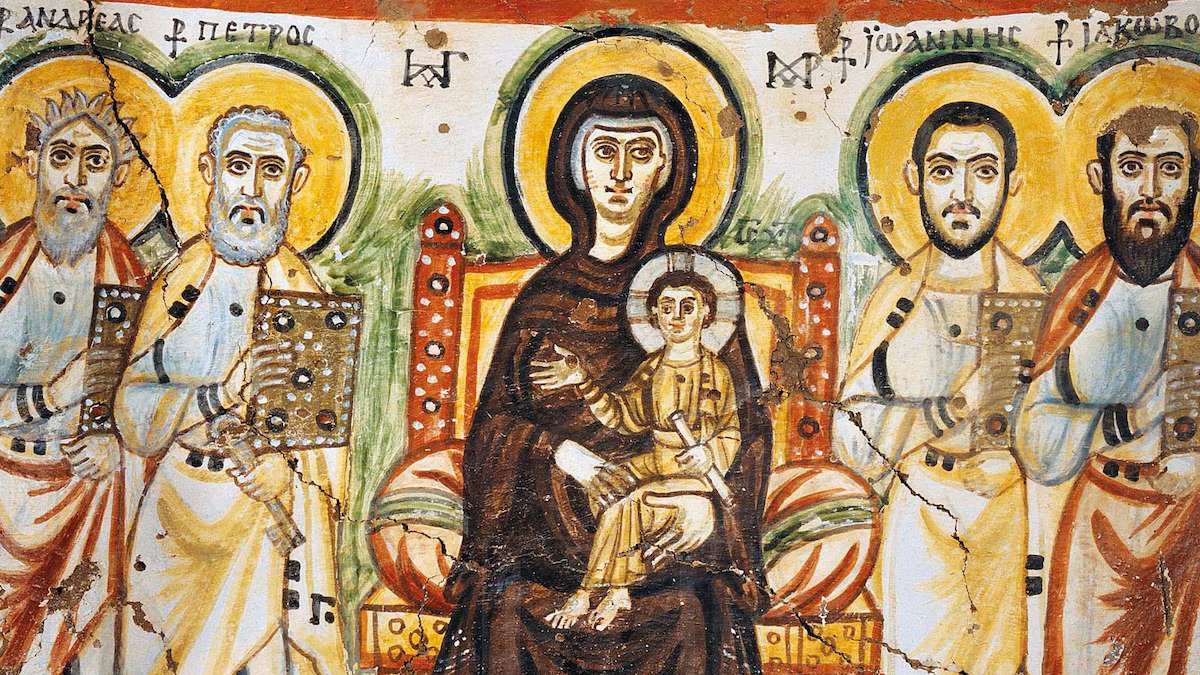THE COPTIC CHURCH COLLECTION
The Coptic Church, the largest Christian denomination in Egypt, has a long and rich history that spans the Dark Ages and Medieval period. During this time, the Coptic Church faced numerous challenges and transformations, ranging from the decline of the Roman Empire to the rise of Islamic rule. Despite these challenges, the Coptic Church played a crucial role in preserving Egypt's Christian heritage, influencing religious thought, and contributing to the broader cultural landscape of the region. In the Dark Ages, the Coptic Church continued to thrive in Egypt following the decline of the Roman Empire. Christianity had already been firmly established in Egypt by the 4th century, especially after Emperor Constantine's Edict of Milan in 313 AD, which legalized Christianity within the Roman Empire. However, the Coptic Church faced theological challenges during this period, particularly due to doctrinal differences with the Eastern Orthodox Church. The key event that defined the Coptic Church during the medieval period was the Council of Chalcedon in 451 AD. The council, convened to address the nature of Christ, resulted in a schism between the Coptic Church and the Byzantine Orthodox Church. The Copts rejected the Chalcedonian definition of Christ’s dual nature (divine and human), believing instead in Miaphysitism, the doctrine that Christ's divine and human natures are united as one. This theological rift led to the establishment of the Coptic Orthodox Church as an independent entity, separate from the Byzantine Orthodox Church.
With the Muslim conquest of Egypt in 641 AD, the Coptic Church faced significant challenges. Under Islamic rule, Egypt was gradually integrated into the Arab caliphates, and while Coptic Christians were allowed to practice their faith, they became a minority in a predominantly Muslim society. Despite this, the Coptic Church managed to survive and adapt, often playing a key role in maintaining Egypt's Christian identity. During this period, the Coptic Orthodox Church continued to maintain its religious leadership through the office of the Coptic Pope, based in Alexandria. The Pope became not only a spiritual leader but also a political figure for the Christian community in Egypt. The Church was able to preserve its traditions, including its liturgy and monastic practices, despite being under the rule of a foreign power. The Church also faced persecution at times, particularly under certain Islamic rulers who imposed additional taxes on non-Muslims or restricted religious practices. Despite these challenges, the Coptic community remained resilient, with the Church providing a sense of continuity for Egyptian Christians during times of political and cultural change. One of the most important aspects of the Coptic Church during the Dark Ages and Medieval period was its vibrant monastic tradition. The Egyptian deserts became the birthplace of Christian monasticism, with Saint Anthony the Great (251–356 AD) often regarded as the founder of Christian monasticism. The Coptic Church’s monastic communities played a crucial role in preserving Christian texts, art, and knowledge during times of upheaval. Coptic monasteries became centers of learning, spirituality, and art. They were places where scribes copied religious manuscripts, many of which would later be used in liturgical services. Monks in the Coptic tradition also made significant contributions to the arts, particularly in the creation of illuminated manuscripts and religious icons. In addition to their cultural contributions, monasteries were centers of charity and care for the sick and poor. Despite the challenges posed by Islamic rule, the monastic community remained deeply committed to its spiritual mission, preserving the Coptic Christian heritage through devotion and education. Throughout the Dark Ages and Medieval period, the Coptic Church in Egypt remained a vital institution despite facing numerous challenges. The theological split with the Byzantine Church and the rise of Islamic rule did not diminish the Church’s importance. Instead, it allowed the Coptic Church to maintain its distinct identity and traditions. The resilience of the Coptic community, with the Church at its center, ensured that Christianity in Egypt survived through centuries of political and social change. Today, the Coptic Church continues to be an essential part of Egypt's religious and cultural fabric, a testament to its perseverance during the Medieval period.

